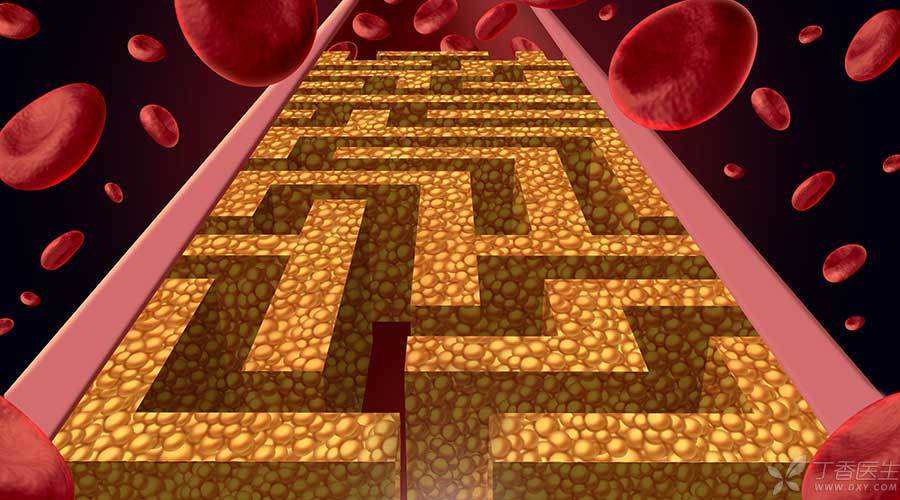
After getting hypertension, everyone will always pay attention to their blood pressure, but many people ignore one thing: blood lipid.
Blood lipid level is very important. Hyperlipidemia itself is a risk factor for cardiovascular and cerebrovascular diseases. If blood pressure and blood lipid are high, the risk of coronary heart disease and stroke will also increase.
Doctors usually check blood lipid and evaluate risks for hypertension patients. Medication is very helpful.
What is the blood lipid level?
After blood lipid rises, the lipid in blood is easier to deposit on the blood vessel wall to form fat plaque, which is often called atherosclerosis. If it is not controlled, fat plaque will become larger and larger, becoming more and more unstable and easy to rupture. Once rupture occurs, thrombosis will form and cardiovascular and cerebrovascular emergencies such as myocardial infarction and cerebral infarction will occur.
In patients with hypertension, the risk of thrombosis is higher.
Suggestion: Hypertensive patients with normal blood lipid should have blood lipid test at least once a year.
The blood lipid indexes that hypertension patients need to pay attention to are:
- Total Cholesterol (TC) Low Density Lipoprotein Cholesterol (LDL-C) High Density Lipoprotein Cholesterol (HDL-C) Triglyceride.
High density lipoprotein cholesterol is called [good cholesterol] by doctors. Generally speaking, it should be higher than 1.04 mmol/L (40 mg/dL).
For hypertensive patients without complications, the appropriate range of blood lipid levels is
- Total cholesterol < 5.2 mmol/L (200 mg/dL), LDL-C < 3.37 mmol/L (130 mg/dL), triglyceride < 1.70 mmol/L (150 mg/dL).
If there are complications such as coronary heart disease and diabetes, Blood lipid should be controlled to a lower level.
Healthy Life Reduces Blood Lipid
Both hypertension and hyperlipidemia are related to lifestyle. Therefore, it is very important to adjust the lifestyle.
Limiting sweets: Sugar can be converted into endogenous triglyceride in liver, increasing the concentration of triglyceride in plasma, so the intake of sweets should be limited; In the meantime, it is necessary to
Drinking less: Alcohol abuse or long-term drinking can stimulate the liver to synthesize more endogenous triglycerides and increase the concentration of low density lipoprotein in blood to cause hypercholesterolemia, so it is better not to drink alcohol. If you drink alcohol, you must limit it. Alcohol intake is less than 25 g/day for men and 15 g/day for women. In the meantime, it is necessary to
Quit smoking: The incidence rate and mortality rate of coronary heart disease in smokers are 2-6 times that of non-smokers, and are directly proportional to the number of cigarettes per day, which may be related to the increase of total cholesterol and triglyceride levels in serum of smokers (smoking more than 20 cigarettes per day); In the meantime, it is necessary to
•Low-salt diet: salt intake should be controlled at < 5 g/day.
These foods can help adjust blood lipid:
Eat more fish: It is recommended to eat more fish rich in n-3 fatty acids, such as tuna, mackerel, salmon and sardines, at least once a week. In the meantime, it is necessary to
Eat more foods rich in fiber: foods with very high fiber content such as grains and bread can effectively reduce LDL-C content in the human body. Nutrition experts pointed out that in order to achieve the effect of affecting cholesterol content, the fiber in the diet must reach 15-30g, so you can eat some lentils, whole wheat pasta, dried peaches and other foods appropriately. In the meantime, it is necessary to
• Eat more soy products: Soy products such as tofu and puffed vegetable protein contain a natural phytochemical called isoflavone. Studies have shown that this chemical helps remove LDL-C, which is harmful to arteries, from the human body. In the meantime, it is necessary to
Take in sufficient vitamin C. Studies have shown that vitamin C content in blood is proportional to HDL-C content in human body, which is helpful to regulate blood lipid.
When do you take lipid-regulating drugs in what?
According to the “Guidelines for Prevention and Treatment of Hypertension” revised in 2010, hypertensive patients with dyslipidemia should take drug therapy when their blood lipid still fails to reach the standard after 3-4 months of lifestyle adjustment, which can significantly reduce the risk of coronary heart disease and stroke.
For hypertension patients without complications, the recommended criteria for starting lipid-lowering drug therapy are:
- Total cholesterol > 6.21 mmol/L (240 mg/dL) or LDL-C > 4.14 mmol/L (160 mg/dL).
Patients with coronary heart disease and diabetes, if:
- Total cholesterol ≥ 4.14 mmol/L (160 mg/dL) or LDL-C ≥ 2.6 mmol/L (100 mg/dL)
Hypolipidemic drugs should be used to control the blood lipid level below the above values.
